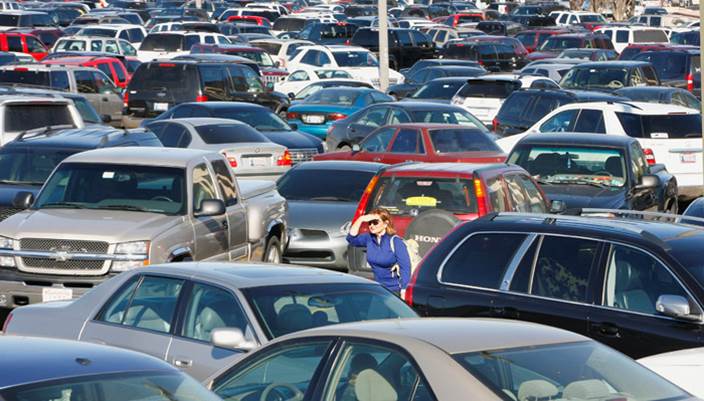In a recent testimony to the Joint Finance Commission of the Wisconsin Legislature, WisDOT Secretary Mark Gottlieb accused “certain groups” of cherry picking traffic numbers to show that VMT on the I94 corridor in Milwaukee has gone down over the last decade. It is likely that he was referring to 1000 Friends’ recent analysis of traffic counts across the state that show consistent declines in driving on almost every single major highway.
Secretary Gottlieb‘s statement is simply false. Our analysis took DOT’s own data and looked at traffic numbers for every single year over the last decade – and found that there was an 8% decrease in volume on the corridor which is consistent with state and national trends. On the subject of cherry picking, however – we found that WisDOT, in their draft environmental impact statement for the project used counts from just one year, in one location, to establish baseline traffic volumes. Even worse –those numbers are very different from those provided to us by a project engineer, which were considerably less than what was used in the DEIS.
In their haste to expand the highway WisDOT is ignoring science that has shown repeatedly that increasing highway capacity never reduces congestion and almost always worsens it. A study by economists from the University of Toronto found that increasing capacity by 10% leads to an increase in driving by 10% – a perfect one-to-one relationship. This phenomenon known as induced demand leads to congestion on highways remaining the same or increasing after expansion. The metrics used to justify expansion are relics of twentieth century transportation planning that only seek to reduce delay for cars, while ignoring other indicators like accessibility to businesses and the quality of travel for transit, bikes and pedestrians.

The hugely disproportionate investments we make in highways come at the expense of other modes. The more supply there is of a free commodity, the more people will use it. When highways are overbuilt, we have people who normally would have lived closer to work or were likely to use public transportation, getting into their cars and driving instead. This leads to more congestion – and further calls to expand the highway.
Instead of being bogged down by this vicious and expensive cycle of highway construction and expansion, we should look at putting different transportation options on a level playing field. There are some enlightened departments of transportation that have recognized their mobility goals being at complete odds with delivering a high quality of life for their citizens. California now has an active target of reducing driving as a means to fighting congestion. The state of Oregon is carrying out cost benefit analyses of different types of projects – for example, weighting transit investments against highway expansions to see how they stack up against each other. This isn’t a liberal phenomenon – even the strongly conservative state of Tennessee is better integrating land use planning into their transportation models to prevent schools and new developments being built on empty, far away land that will need large investments in roads, electricity wires and sewer lines.
Unfortunately, Secretary Gottlieb’s statements show that our own DOT is stuck in a mentality of decades past. If we don’t invest in transportation choice and instead focus single mindedly on highway expansions, Wisconsin will be left behind by states like Minnesota, who are seeing increased economic development by funding other modes more equitably.
-by Ash Anandanarayanan, Transportation Policy Analyst
